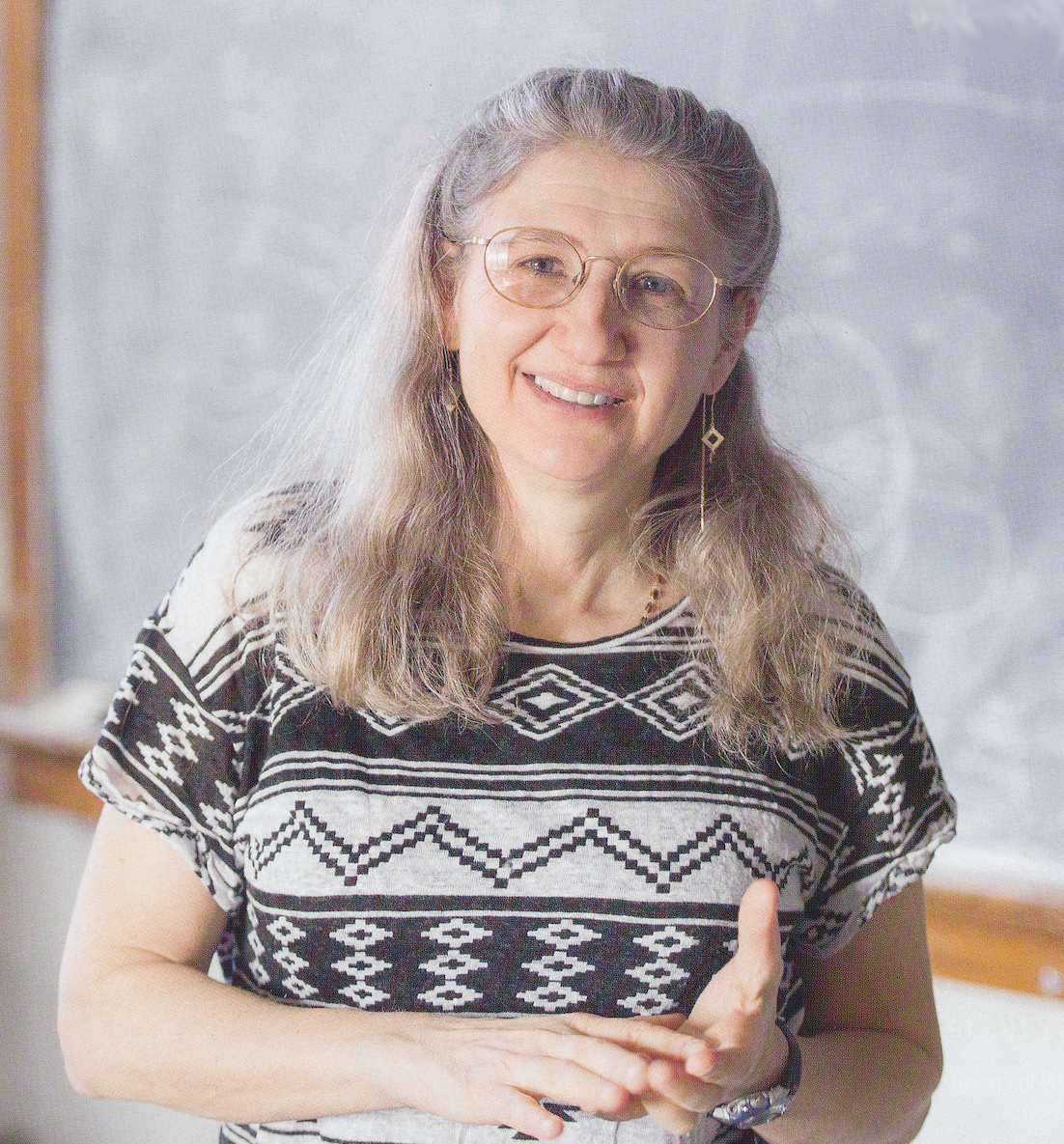 Presenter: Alice Quillen, Ph.D., Professor of Physics and Astronomy, University of Rochester
Presenter: Alice Quillen, Ph.D., Professor of Physics and Astronomy, University of Rochester
Topic: Collective motion and traveling waves in swimming nematodes and in Boids enclosed by a flexible loop
Self-propelled organisms that oscillate can exhibit novel types of collective phenomena that include synchronization and traveling waves. In lab experiments, vinegar eels, a type of free swimming nematode, collect on a boundary and synchronize their undulations, giving traveling waves that propel fluid. A strongly directed interacting oscillator chain model that mimics steric repulsion between organisms exhibits a metachronal wave similar to that seen in our experiments.
Simulations of aligning and repulsive self-propelled particles in 2D when enclosed by a damped flexible and elastic loop shaped boundary exhibit disordered, jammed, and circulating states. The circulating states exhibit a rich variety of shapes including ruffles and sprockets. Ruffles arise from an instability that is present when the speed of waves on the boundary matches the self-propelled particle’s swim speed.
These two systems illustrate that confinement and interactions with a boundary can affect collective behavior. In a real system of organisms, boundaries could be purposely used to influence collective behavior. We may be able to design a mechanism that can harness collective motion in swimming organisms to drive fluid flow.
Alice Quillen's research includes observational, numerical and theoretical studies of the dynamics of exoplanets, moons, satellites, planetesimals and gas in circumstellar disks, asteroids, and the dynamics of stars in galaxies. She also works on particle integration codes, the transient dimming sky (light curves), active galactic nuclei, active and viscoelastic soft matter, granular systems, biophysics and robotic physics. Her lab (in B&L403) focuses on experiments of active biological materials, granular systems relevant to rubble asteroids and low cost robotics.

